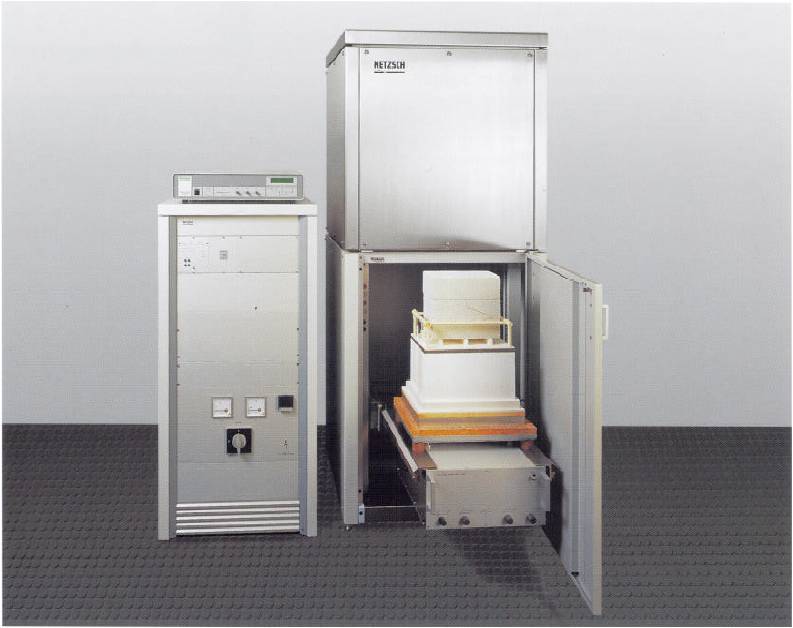Thermal Conductivity Tester

Thermal conductivity is the most important thermo physical parameters for characterization of the thermal transport properties of a material or component, specially for refractories which are normally used at high temperature.
The hot-wire method is an absolute method for direct determination of the thermal conductivity, based on the measurement of the temperature increase of a linear heat source/hot wire (cross-wire technique) or at a specific distance from a linear heat source (parallel-wire technique). The hot wire and thermocouple are embedded between two test pieces, which make up the actual test assembly. The time-dependent temperature increase after the heating current is switched on is a measure of the thermal conductivity of the material being tested. Another variation, the so-called "Platinum Resistance Thermometer Technique" or "T(R) Technique", is described in ASTM-C 1113. Here an integral temperature measurement is carried out over the entire length of the hot wire; i.e. the hot wire is both heat source and temperature sensor at the same time. The TCT 426 thermal conductivity tester enables the use of all three of the methods described in easily interchangeable, pre-wired measuring frames. Controller unit is connected with measuring frame inside a SiC Thercouple bearing furnace. With this instrument Thermal conductivity of refractories can be measured at room temperature as well as high temperature. (1500oC)
